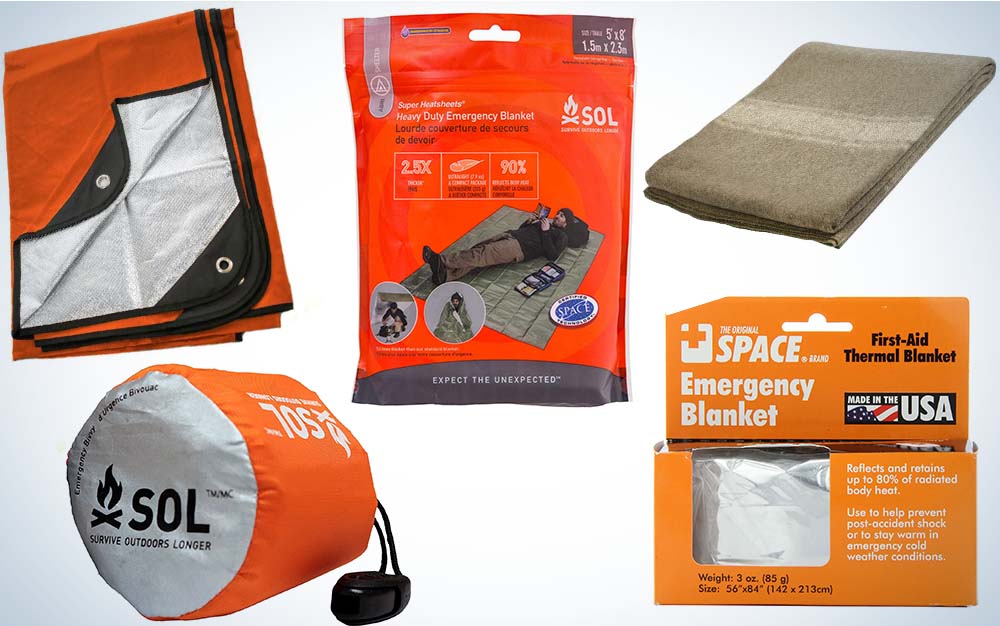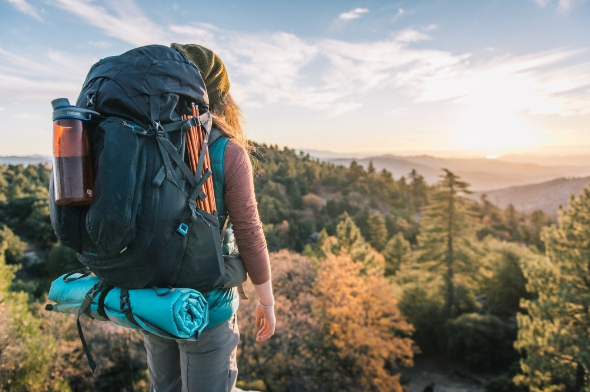Hiking is an exciting and adventurous activity that draws many outdoor enthusiasts. Whether you’re a beginner or an experienced hiker, having the right gear can make all the difference in your hiking experience.
From safety essentials to comfort items, it’s important to be fully prepared before embarking on any hiking expedition.
In this blog post, we’ll discuss some essential things to bring with you when hiking, ensuring you have a fun and safe time exploring the great outdoors.

Table of Contents
1. Proper Footwear: Hiking Shoes or Trail Runners
When it comes to hiking, choosing the right footwear is essential. For easy trails, Trail Runners or Tennis Shoes may suffice, but for more rugged terrain, you’ll want to opt for Hiking Shoes or Boots. They provide the needed support and protection for your feet and ankles, especially if you’re carrying a heavy backpack.
And if you’re unsure about which to choose, go for hiking shoes as they combine the best of hiking boots and trail runners – they’re lightweight, comfortable, and versatile. Just make sure to get shoes with waterproof materials like Gore-Tex if you’re hiking in wet conditions.
Remember, your footwear is one of the most important investments in hiking, so choose wisely. And don’t forget to break them in before hitting the trail!
2. Weather-Appropriate Clothing: Moisture-wicking and Layers
When hiking, it is essential to dress appropriately for the weather. Opt for moisture-wicking clothing in breathable materials to prevent sweating and chafing. Make sure to wear layers so that you can easily adjust your clothing as the temperature fluctuates throughout the day. Avoid cotton materials as they do not wick away moisture and can leave you feeling cold and uncomfortable. Choose hiking-specific socks to prevent blisters and provide extra cushioning for your feet on long hikes.
Remember, dressing appropriately for the weather is crucial for your safety and comfort during your hike. Don’t forget to pack items like a rain jacket, hat, and gloves in case of unexpected weather changes. Once you’re dressed appropriately, you can focus on enjoying the beauty of the great outdoors without any distractions.

3. Navigation Tools: Map, Compass, or GPS
When it comes to hiking, safety should always be your top priority. That’s why having the right navigation tools is essential. A map, compass, or GPS device will help you navigate your way through unfamiliar terrain and ensure you stay on the right path.
Make sure to pack a physical, handheld map of the area you’ll be hiking in, as well as a topographic map in a clear plastic bag or waterproof case. Even with the convenience of modern apps and GPS units, it’s still important to have traditional map and compass skills in case technology fails.
Don’t forget to equip yourself with a basic altimeter, GPS watch, or cell phone GPS app for dead-reckoning, which is especially useful for staying on the trail. With these navigational tools, you can confidently explore new terrain without worrying about getting lost.

4. First Aid and Emergency Supplies: Medications, Bandages, etc.
To ensure your safety while hiking, having a well-stocked First Aid kit is important. This includes medications for allergies and pain relief, as well as bandages and antiseptic wipes for minor injuries. Remember to carry this kit with you at all times, and to restock it after every trip.
Bandages come in all shapes and sizes, so bring a variety to cover any cuts or scrapes you may encounter. Consider packing butterfly bandages or Steri-strips for more secure closure on deeper cuts. Medical tape can also come in handy for securing bandages and reducing friction on areas prone to blisters.
Along with bandages, it’s important to have antiseptic wipes for cleaning wounds and reducing the risk of infection. Pack at least three of these for your trip, and make sure they are easily accessible in your First Aid kit.
Remember, accidents and injuries can happen unexpectedly. That’s why it’s crucial to be prepared for any emergency situation. So, before hitting the trails, ensure your First Aid kit is fully stocked with all the necessary supplies, and that you know how to use them. By doing so, you’ll be able to confidently enjoy your hike, knowing that you’re ready for anything that comes your way.
5. Sun Protection: Sunscreen, Sunglasses, and Protective Clothing
Hiking in the sun can be enjoyable but also dangerous if proper sun protection is not taken. It’s essential to pack and wear sunscreen, sunglasses, and protective clothing to avoid sunburn, snow blindness, and other sun-related problems.
In addition to protecting your skin with sunscreen, wearing sunglasses can help protect your eyes from harmful UV rays. Opt for sunglasses with UV protection and polarized lenses to reduce glare and enhance your vision on the trail.
Sun-protective clothing is also a must-have in your hiking gear. Consider wearing long-sleeved shirts and pants that are breathable, moisture-wicking, and offer sun protection. You can also invest in a hat or a cap that provides shade for your face, head, and neck.
Remember, even on cloudy days or during winter hikes, UV rays can still penetrate your skin and cause damage. So, apply sunscreen before hitting the trail, and reapply it every few hours to ensure maximum protection.
With proper sun protection gear, you can enjoy the great outdoors while avoiding the harmful effects of the sun. So add sunscreen, sunglasses, and protective clothing to your hiking checklist, and hike with confidence!
6. Illumination: Headlamp or Flashlight for Night Hikes
When it comes to hiking at night, having proper illumination is essential for both safety and enjoyment. That’s why you should never leave home without a reliable headlamp or flashlight in your backpack. As we previously mentioned, headlamps are the most convenient and should be your first choice if you want your hands free to hold onto things. Nevertheless, if you prefer using a flashlight to control the direction of light, then make sure it’s a high-quality one with maximum brightness that won’t quickly run out of battery.
During night hikes, a headlamp or flashlight helps you navigate the trail, particularly on technical and uneven terrain. To ensure that it works optimally, bring extra batteries, check the red-light setting, and choose between 80-150 lumens of light for better visibility. Also, bring a flashlight that you are willing to use, and test it before hitting the trail. Keep in mind that hiking in the dark with an emergency headlamp is not an ideal option, so it’s best to choose a headlamp that produces ample illumination to keep you safe.
When you prepare for a night hike, make sure to bring all the necessary items on your checklist, such as appropriate footwear, weather-appropriate clothing, navigation tools, first aid and emergency supplies, sun protection, snacks and food supplies, emergency blanket or bivouac, toiletries, and optional gear like hiking poles, gaiters, or bear spray. Once you pack everything, you’re all set to enjoy the stunning views and peacefulness that hiking at night brings. Remember to be observant, alert, and cautious, and have fun!

7. Snacks and Food Supplies: Nutrient-packed for Energy
Now that you’re properly dressed and equipped, it’s time to pack some nutritious snacks and food supplies to fuel your body on the hike. Grab some lightweight and compact nut-based bars, trail mixes, or dried fruits to keep your energy levels high throughout the day. Don’t forget to pack some fresh whole fruits like apples, bananas, oranges that are easy to carry and provide essential vitamins and fiber. Hummus is also one of the best hiking snacks, as it is high in calories, carbs, protein, and fiber, and pairs perfectly well with fresh veggies or crackers. If you’re a fan of tortilla or bagel sandwiches, you can fill them with hard meats and cheeses for extra protein and calories. Nuts are also an excellent source of protein and healthy fats that can keep you feeling full and energized. So, whether you prefer savory or sweet, make sure to pack some nutrient-packed snacks that will keep you going on the trail all day long.

8. Emergency Blanket or Bivouac: Protection from Temperature Drops
You can never predict the weather while you’re out hiking, so it’s important to be prepared for any situation. An emergency blanket or bivvy is essential gear to keep with you in case you get lost or stuck on the trail late at night. Depending on the day hike, you may think insulation is not really essential, but at higher altitudes, when the sun goes down, so does the temperature.
Make sure to pack an emergency blanket or bivvy to keep you warm and protected from the cold. Grizzly Gear Emergency Thermal Sleeping Bags are a great option as they are weatherproof, mylar and disaster survival, and compact. To maximize warmth, wrap yourself in a wool or fleece blanket first, then put the Mylar blanket outside of those blankets. For even more protection, use duct tape to seal any gaps in the blanket. Eye protection can also be improvised by cutting a bit of Mylar from an emergency blanket or making small slits in a piece of cardboard or cloth.
Being prepared for any emergency while out hiking is key to ensuring a safe and enjoyable experience. You now have everything you need to make sure you’re fully prepared for any temperature drops. Remember, it’s better to be safe than sorry!
9. Toiletries: Toilet Paper and Other Necessities
When it comes to toiletries, it’s easy to forget to bring them on a hiking trip. But with our comprehensive checklist, you won’t have to worry about being caught without the essentials. In addition to toilet paper, make sure to bring a waterproof toiletry bag with moisturizer, sunscreen, lip balm, face wash, lightweight towel, napkins, and hand sanitizer. Dental hygiene is important too, so don’t forget a compact travel toothbrush and toothpaste. And while it may not be essential, it’s always nice to feel fresh and clean, so consider packing a small towel, paper soap, and bar soap. Remember, being prepared for all situations is key when hiking, so don’t skip out on the toiletries.
10. Optional Gear: Hiking Poles, Gaiters, or Bear Spray
When hiking, having the right gear can make all the difference in your experience. While hiking poles, gaiters, and bear spray may not be necessary for every hike, they can certainly enhance your safety and comfort, especially in more challenging terrain. Trekking poles can provide added stability and reduce strain on your joints, making steep ascents and descents easier. Gaiters can protect your feet and legs from rocks, debris, and mud, keeping you dry and comfortable. And bear spray can potentially save your life in the event of a bear encounter. These optional gear items may not be crucial for every hike, but they are certainly worth considering for those looking for an extra level of preparedness and comfort on the trail. Remember, always check with local regulations and guidelines before using bear spray, and use it responsibly if necessary. With these optional gear items on hand, you’ll be ready to tackle any trail with confidence!
